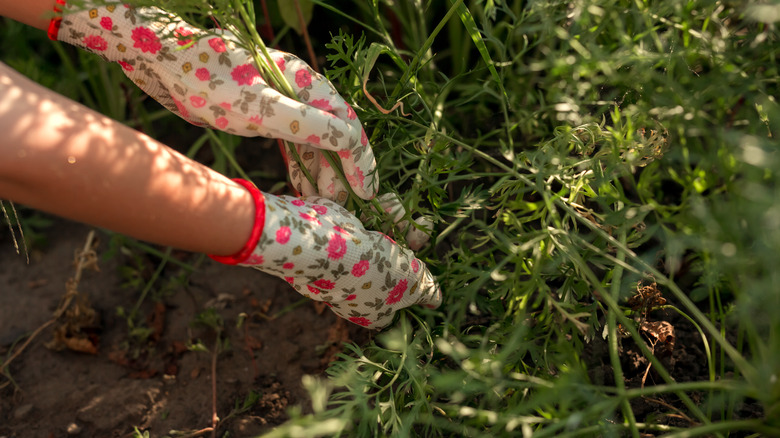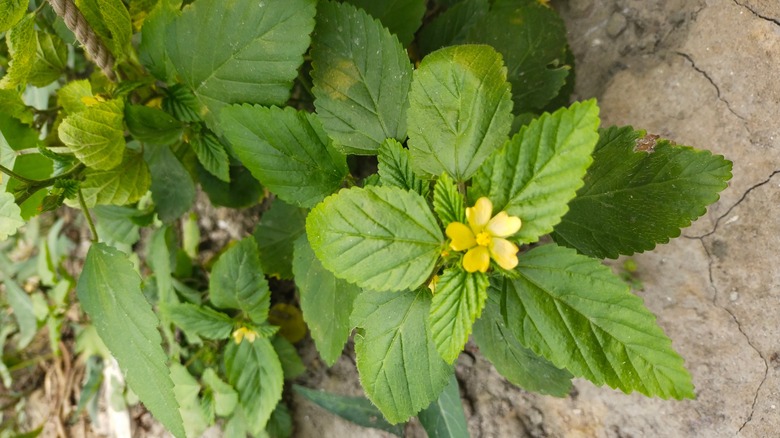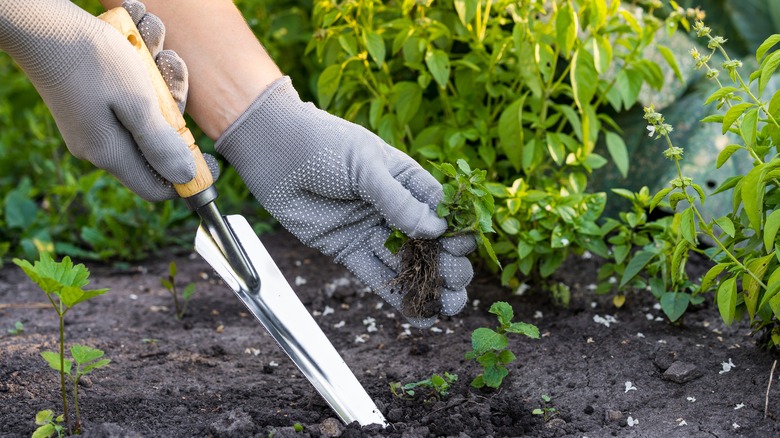If This Flowering Weed Pops Up In Your Garden, Your Soil Might Need Some TLC
Sometimes, our gardens and yards can feature plants we didn't add simply because they sprout after seeds disperse through the wind or water or are carried to your garden via animals. Spotting new weed growth can indicate conditions in your garden, such as soil health. For instance, when you see Dutch clover, its appearance can indicate that your soil is low in nitrogen, while prostrate knotweed may signal you have an infestation of nematodes. If you see a yellow flower with heart-shaped petals in the summer, it may mean your soil needs some TLC, as this can be Potentilla monspeliensis. Potentilla monspeliensis, also known as Norwegian or rough cinquefoil, is not uncommon to find in your garden, where it's an indicator of low acidic soil. Potentilla monspeliensis can be an annual when it grows in cultivated ground and a biennial in less disturbed sites.
This weed and its subspecies share common names, such as Potentilla norvegica. They are fond of growing on roadsides but also pops up along river shorelines, pastures, and meadows. It's native throughout the United States, particularly in the northwestern and eastern regions. Unlike other Potentilla species, rough cinquefoil is uncommon in the southern states such as Florida, Louisiana, and Mississippi. If you're curious whether your new weed is rough cinquefoil, you can look closely at its appearance to determine the answer.
Seeing rough cinquefoil in your garden
Rough cinquefoil features an appearance similar to wild strawberries, particularly when young. Notice the height of the plant, as rough cinquefoil, unlike wild strawberries, stands between one and two feet tall. If you can't discern the difference, you can also count the leaflets, as strawberries have three and cinquefoil features five. Once you know it's a rough cinquefoil and it's thriving among your plants, you might want to alter the soil ph, especially if your garden has acid-loving plants such as hydrangeas and rhododendrons.
Begin with a test to measure the pH of your soil and determine its level. This weed prefers soil with a ph between 5 and 7, so any soil with similar levels may be deficient in nutrition for your other resident plants. If you come up with a less-than-satisfactory rating, you can then adjust and fix the soil acidity imbalance. Now that you addressed the nutrition deficiency in your garden, it's time to remove the pervasive intruder weed.
Removing rough cinquefoil and what to do with it
Unless you want the weeds proliferating rapidly, you should remove rough cinquefoil quickly. Cinquefoils are tenacious weeds with long taproots. Once they've sprouted in your garden, pull it up by hand, as mowing isn't effective. Mowing can stimulate the root growth and increase their population. If you have a small patch of cinquefoil, you can remove them by digging if rooted within moist soil. Avoid pulling the weeds from dry soil. Instead, try to water the soil a day or two before digging to help make the process easier. Left undisturbed, the rough cinquefoil can quickly overtake other plants, growing in thick mats. Ensure you remove all of the taproot, or the cinquefoil will regrow, and you'll have to start again.
As part of the potentilla family, rough cinquefoil has medicinal applications. A 2020 study by researchers at the Manipur University Department of Life Sciences (Botany) in Imphal, India examined potentilla species and their history as anti-inflammatory treatments for ailments such as wounds, diabetes, and diarrhea. Although the field requires more modern research, folk medicine incorporates potentilla such as rough cinquefoil for pressed compresses. After you rid your garden of the weed, you can use its leaves in a salad, as there's no known toxicity.


